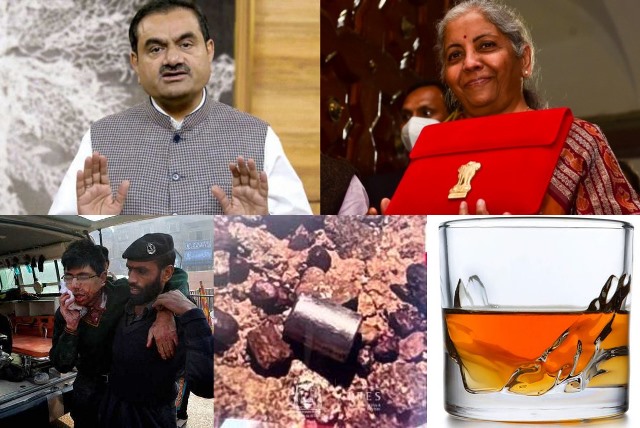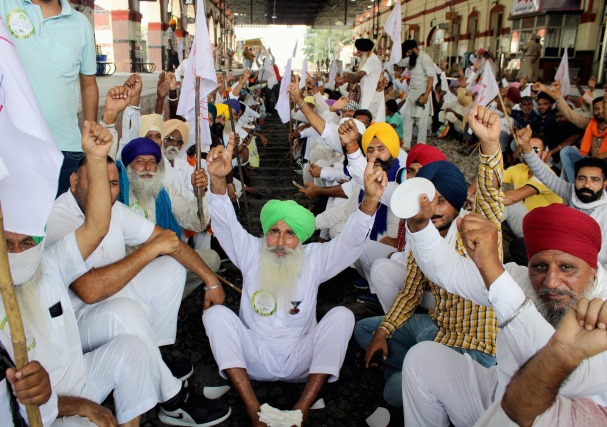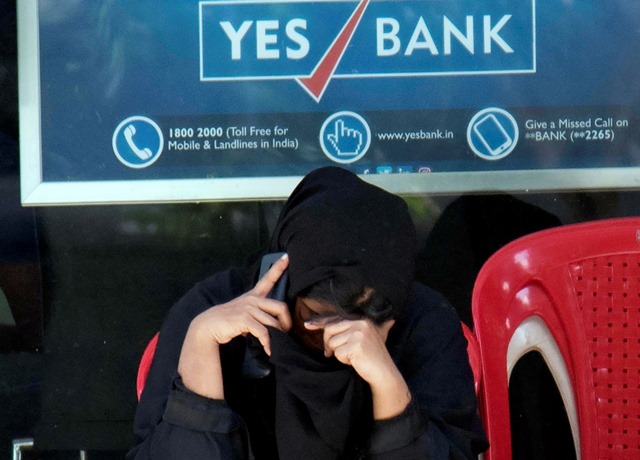Adani’s Sordid Tale Turns Murkier
If you’re not a filthy rich billionaire, one way to waste some time could be to scan Forbes magazine’s list of real-time billionaires. The list, which tracks the daily ups and downs of the world’s superrich, is designed for those who like to get their pleasures vicariously. Last weekend, I found myself ogling the list to see how Elon Musk had gained $6.1 billion in a day. In late 2021, mainly because of poor performance of his electric car company Tesla’s stocks, Musk (who bought Twitter recently) lost nearly $200 billion in net worth: falling from more than $320 billion to around $140 billion.
Since then, however, Musk has regained some of his fortune. Last weekend, his net worth, according to Forbes, was $189.2 billion, making him the second richest man in the world, after Bernard Arnault, the French businessman who is the founder, chairman, and CEO of LVMH Moët Hennessy Louis Vuitton, the world’s largest luxury products conglomerate.
The more interesting part of the Forbes ranking was, however, happening at a somewhat lower level of that list. From being the third-richest man in the world barely a few weeks ago, India’s Gautam Adani had slithered down the fickle greasy pole of wealth in a matter of days last week to the No. 17 position on the Forbes list of real-time billionaires. Adani, who heads a conglomerate that includes port management, electric power generation and transmission, renewable energy, mining, airport operations, natural gas, food processing and telecoms, has been in the midst of a controversy recently after a US-based “activist” short-selling investment firm, Hindenburg Research, accused his group of stock manipulation and financial fraud.
Adani denied those allegations but his group’s listed stocks plummeted in value and the conglomerate is estimated to have lost more than $100 billion in market value, while nearly $50 billion of his own personal net worth was believed to have been wiped out by the market turmoil. Last weekend, at No.17 on the Forbes list, Adani was estimated to have a net worth of $61.7 billion, which, dear reader, is akin to peanuts in the world of the super rich.
The Hindenburg report came just before the Adani group was scheduled to put on offer a public sale of shares to the tune of $2.5 billion in one of its companies. The group went ahead with the public issue and it was fully subscribed, primarily with the help of big investors, including a couple of Indian industrialists and an Abu Dhabi based holding company with links to a member of the UAE royal family. However, last Wednesday in a volte face the group called off its share sale and said that it would return $2.5 billion to investors.
In response to the Hindenburg report, the Adani group released a voluminous 413-page document that is mostly verbiage and doesn’t really address the allegations of stock manipulation and large-scale financial fraud against the group. Meanwhile, the ripples continued. On February 2, Jo Johnson, the younger brother of former British prime minister Boris Johnson, resigned from an investment bank in Britain that had been accused of using funds to manipulate Adani group company shares.
The reaction to the Hindenburg Research’s report has been curious. While the international media has picked up on it and done exhaustive reports on it, the Indian mainstream media–with the exception of a few–have produced milquetoast coverage, many publications providing morespace to Adani’s so-called rebuttal than to the issues raised by Hindenburg Research. ‘
Interestingly, even as the Hindenburg report was being put together, in late 2022, the leading Indian magazine, India Today, featured Adani on the cover. He was the magazine’s Newsmaker of the Year and they called him the Growth King. News can be unpredictable as the magazine must have learnt to its chagrin. Adani has been really making news only now. Oh, and before I forget, you could do this: Go to the ndtv.com website (it is India’s leading television and digital news outlet). Type “Adani” in the search box and see what you get. (If you’re perplexed, please remember Adani bought the company recently).
What Does India’s Budget 2023-24 Have for You?
Apparently, it has “something for everyone”. That is the way many experts described the Budget that was presented by India’s finance minister Nirmala Sitharaman last week. In case you are unfamiliar, the presentation of the Indian Government’s Budget is a big event in the country. And it has been so ever since Independent India’s first Budget was presented by the country’s first finance minister Shanmukham Chetty, on 26th November, 1947.
The excitement and anticipation about the Budget has two dimensions. The ordinary salaried citizen looks to see what tax reliefs she or he will get on income tax rates, rebates and incentives to save. And also to see how the rates of indirect taxes levied on goods and services will affect the cost of living. Then, there are business–large, medium, and small–who also wait to see the changes in tax rates on the goods and services they produce and the changes in policy that are implicit in the annual Budget.
There was a time when such changes could be quite wide-ranging. In the pre-1990s era when Indian industry was regulated and followed a sort of socialistic pattern where the public sector was the commanding heights of the economy and private entrepreneurs pretty much depended on the government to stipulate what and how much they could produce, the Budget resembled an annual lottery where luck (and, of course, clout) determined which businesses benefited and which ones didn’t.
Post-liberalisation, things have changed somewhat. With large-scale privatisation, economic activity is pretty much market driven. Yet, the excitement over the Budget each year continues. Mainly, it is pervasive in the media, which believes it is a hugely important event that their readers and viewers are dying to know about.They are probably wrong. With the government eschewing the practice of using the Budget to make policy changes and the new indirect tax regime becoming a simpler one, the only thing the general public is likely interested in is income tax rates and whether they are going to change.
In this year’s Budget they, unsurprisingly, have. Unsurprisingly because this will be the last Budget before the Parliamentary elections are held and the current regime is keen to offer citizens something to remember it by while voting next year. Hence, the income tax exemption limit has been raised. Now, people earning less than Rs 7 lakh will not have to pay taxes (it was Rs 5 lakh before). Tax rates for taxpayers have also been reduced, providing relief mainly to the middle-income groups.
The government also announced savings schemes for women, credit guarantees (basically funds) for medium and small enterprises, and more benefits for the really poor.
In other words, this year’s Budget can be viewed as one of the first steps of the current regime’s bid to return to power after the next elections.
Terror Strikes in Pakistan Again
Last week a dastardly suicide bomber attacked a mosque in Pakistan’s Peshawar city, killing an estimated 100 people while they were praying. Investigations have revealed that the bomber might have been dressed in a police uniform. The mosque is located in the city’s Police Lines area and it is believed many of the people killed were policemen.
According to Pakistan’s Dawn newspaper, “The outlawed Tehreek-i-Taliban Pakistan (TTP) claimed responsibility for the attack. It later distanced itself from it but sources earlier indicated that it might have been the handiwork of some local faction of the outlawed group”.
There has been a resurgence of violence in Pakistan after the Taliban seized power in Kabul in 2021 after American troops exited that country. The mosque bombing has been described as Pakistan’s deadliest assault in several years. Terrorism is now back in focus in a country where political turmoil has been ongoing and, for all practical purposes, the army controls the government. It would be interesting to see how the current regime, headed by prime minister Shebaz Sharif, counters the resurgence of terror.
Lost & Found: The Curious Story of a Radioactive Capsule
The media was agog last week over the strange tale of how a tiny radioactive capsule (its dimensions were smaller than a coin’s) got lost and was then found in Australia. The Caesium-137 capsule was lost in transit more than two weeks ago in Australia’s outback area.
Although exactly how the capsule got lost is not yet known, it was part of a gauge used to measure density of iron ore in a mine in Western Australia. The mine is supposedly one of the world’s most highly technological ones and is highly automated. The gauge was apparently being transported to another facility when it fell off a truck.
Last week, the authorities recovered the tiny capsule after a week-long search using specialised detection equipment. The exercise has been compared to finding a needle in a haystack.
Can Whisky’s Ingredients Keep Your Skin Healthy?
Every now and then we come across stories in the media about drinking and health. Such as the one that says drinking wine in moderation can be good for your heart. Or the one about drinking beer in moderation to avoid kidney stones.The truth is that there are as many reports about the benefits of moderate drinking as there are about the harmful effects of doing so. That doesn’t stop the constant flow of “wisdom” about the effects of drinking, though.
Here’s a new one that is not exactly connected to drinking but to whisky. According to a study by Robert Gordon University’s (RGU) School of Pharmacy and Life Sciences in Scotland , pot ale, a residue from the whisky-making process, has antioxidant benefits that could be used in skincare. The scientists doing the study placed nutrients and polyphenols from whisky in skincare products as a basis for their research and found that they could reduce inflammation and puffiness and redness and fight free radical damage from the environment.
There is a caveat though: the Inverness-based natural skincare firm Zaza & Cruz was involved in the study and now uses the ingredient in its products. So, go figure!



